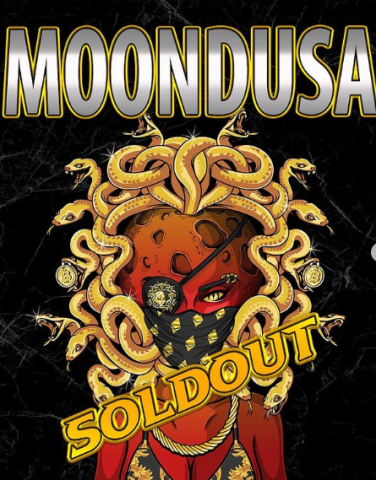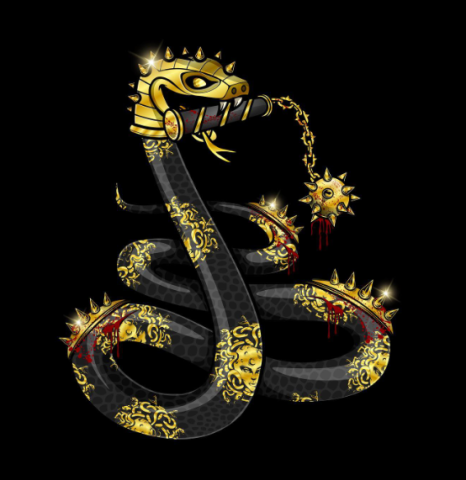“If you are an artist and still don’t use NFT (Non-Fungible Token), you are potentially missing millions of dollars.” ― Olawale Daniel
In early 2019, non-fungible tokens (NFTs) appear to have exploded from the ether. These digital assets, from art and Music to tacos and toilet paper, sell like 17th-century exotic Dutch tulips, with some fetching millions of dollars. Are NFTs, on the other hand, worth the money—or the hype? Some analysts believe they will burst like the dot-com mania and Beanie Babies. However, others feel that NFTs are here to stay and will forever revolutionize investment. A digital asset that reflects real-world elements like art, Music, in-game items, and videos is known as an NFT. They’re bought and traded online, often using cryptocurrency, and they’re usually encoded with the same software as many other cryptos. Even though they’ve been there since 2014, NFTs are currently gaining popularity as a popular means to buy and sell digital artwork. Since November 2017, a whopping $174 million has been spent on NFTs.

Since the buzz around NFTs, many prominent businesspeople and entrepreneurs have jumped on board. Some buy, while others design their own, but both benefit handsomely from NFTs. Snoop Dogg, Justin Bieber, Paris Hilton, and other well-known celebrities are among those who own NFTs. NFTs are also one-of-a-kind, or at the very least one of a minimal run, and contain unique identifying codes. This is in sharp contrast to most digital products, which are nearly always available in endless quantities. If a particular asset is in demand, cutting the supply should theoretically increase its value.
“Essentially, NFTs create digital scarcity,” – Arry Yu
However, many NFTs have been digital creations that already exist in some form elsewhere, such as legendary video clips from NBA games or securitized versions of digital art that are already floating around on Instagram, at least in these early days. One of the record-breaking and known for its unique style NFT is Moondusa – A Versace-inspired Artwork sold within the hour of its launch.
Moondusa, one of Solana’s newest NFT ventures, recently sold out just one hour after its launch! Moondusa is quickly becoming one of the best additions to the Solana NFT marketplace, promising to be a community-driven project that incentivizes users to become holders via airdrops, giveaways, and exciting events. Moondusa is a collection of 8,888 NFTs that were generated at random! Each token is created at random by the excellent artist Self33, with a unique combination of background, body, clothes, neck ornament, mouth, eyes, and snake hair. The Moondusa NFT community will provide a multitude of options to every one of its holders, rewarding ownership through various prizes, airdrops, and other means. Getting its inspiration from the Greek Medusa usage in brands like Versace and the famous crypto world phrase “to the moon,” the brand brings together vision and mission to create a project focused on delivering long-term results to its community members. Moondusa NFTs are the brainchild of two creative and imaginative entrepreneurs who collaborated with Self33, an excellent well-known artist. Self33 has made waves throughout the music industry with his creativity, albums, and ability to push and promote artists and projects. Justin Secreti and Corey Allen, the two co-founders, have been long-time friends and business partners, while Self33 has made ripples throughout the music industry with his creativity, albums, and ability to push and promote artists and projects. With a large and active NFT community on Discord, a dedicated staff, and the attention of the entire Solana space on this project, it’s one that both NFT enthusiasts and investors should keep their eyes open to.
However, with all the hype around them, the question that is often asked is individual images—or perhaps the entire collage of pictures—can be viewed for free on the internet. So, why are people prepared to spend millions of dollars on something that might be easily screenshotted or downloaded? A non-financial transaction permits the buyer to keep the original object, and it also comes with built-in authentication, which acts as proof of ownership. The “digital bragging rights” are almost as valuable as the item itself to collectors.
Is there a link between cryptocurrency and non-fungible tokens (NFTs)? NO! The fact that NFTs are generated using cryptographic coding techniques does not imply that they are linked; the similarities end there. Cryptocurrencies and physical money are both “fungible,” meaning they may be traded or exchanged for one another. They’re also worth the same amount of money—one dollar is always worth another dollar and one Bitcoin is worth another. The fungibility of cryptocurrency makes it a secure way to execute blockchain transactions. NFTs aren’t like other materials. Each contains a digital signature that prevents NFTs from being substituted for or compared to one another (hence, non-fungible). Simply because they’re both NFTs, one NBA Top Shot clip isn’t the same as everyone. (For that matter, one NBA Top Shot footage isn’t necessarily equal to another NBA Top Shot clip.)
Another question that is asked frequently is how does an NFT work? NFTs are stored on a blockchain, a decentralized public ledger that keeps track of transactions. Most people are familiar with blockchain as the underlying technology that allows cryptocurrencies to exist. NFTs are most commonly supported on the Ethereum blockchain, although they can also be held on other blockchains. Graphic art, GIFs, Videos and sports highlights, Collectibles, Virtual avatars, video game skins, Designer sneakers, and Music are all digital artifacts that can be used to make an NFT. Even tweets are taken into account. Jack Dorsey, a co-founder of Twitter, sold his first tweet as an NFT for more than $2.9 million.

NFTs are essentially digital versions of physical collector’s artifacts. As a result, the customer receives a digital file rather than receiving an actual oil painting to put on the wall. They also obtain exclusive ownership rights. NFTs can only have one owner at a time, and their use of blockchain technology makes verifying ownership and transferring tokens between owners simple. In the metadata of an NFT, the creator can also store unique information. Artists, for example, can sign their work by putting their signatures in the file.
Media Contact
Contact Person: Justin Secreti
Email: Send Email
Country: United States
Website: https://www.instagram.com/s3creti/